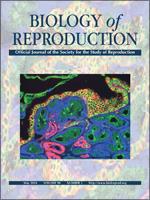Spermatogenesis is a complex developmental process whereby diploid spermatogenic stem cells become haploid and undergo a series of morphological changes to produce physically mature spermatozoa. Crucial to this process are a number of RNA-binding proteins, responsible for the posttranscriptional control of essential mRNAs and particularly pertinent to the two periods of inactive transcription that occur in spermatogenesis. One such group of RNA-binding proteins is the Musashi family, specifically Musashi-1 (MSI1) and Musashi-2 (MSI2), which act as key translational regulators in various stem cell populations and have been linked with the induction of tumorigenesis. In the present study, we examined the differential expression of mammalian MSI1 and MSI2 during germ cell development in the mouse testis. MSI1 was found to be predominately localized in mitotic gonocytes and spermatogonia, whereas MSI2 was detected in meiotic spermatocytes and differentiating spermatids. Extensive examination of the function of Musashi in spermatogenesis was achieved through the use of two transgenic mouse models with germ cell-specific overexpression of full-length isoforms of Msi1 or Msi2. These models demonstrated that aberrant expression of either Msi1 or Msi2 has deleterious effects on normal spermatogenesis, with Msi2 overexpression resulting in male sterility. Studies undertaken on human testicular seminoma tumors provide further insights into the relevance of MSI1 and MSI2 overexpression as diagnostic markers to human stem cell cancers. Overall this study provides further evidence for the unique functions that RNA-binding protein isoforms occupy within spermatogenesis, and introduces the potential manipulation of the Musashi family proteins to elucidate the mechanisms of posttranscriptional gene expression during germ cell development.
How to translate text using browser tools
26 March 2014
Developmental Expression of Musashi-1 and Musashi-2 RNA-Binding Proteins During Spermatogenesis: Analysis of the Deleterious Effects of Dysregulated Expression
Jessie M. Sutherland,
Barbara A. Fraser,
Alexander P. Sobinoff,
Victoria J. Pye,
Tara-Lynne Davidson,
Nicole A. Siddall,
Peter Koopman,
Gary R. Hime,
Eileen A. McLaughlin
ACCESS THE FULL ARTICLE

Biology of Reproduction
Vol. 90 • No. 5
May 2014
Vol. 90 • No. 5
May 2014




